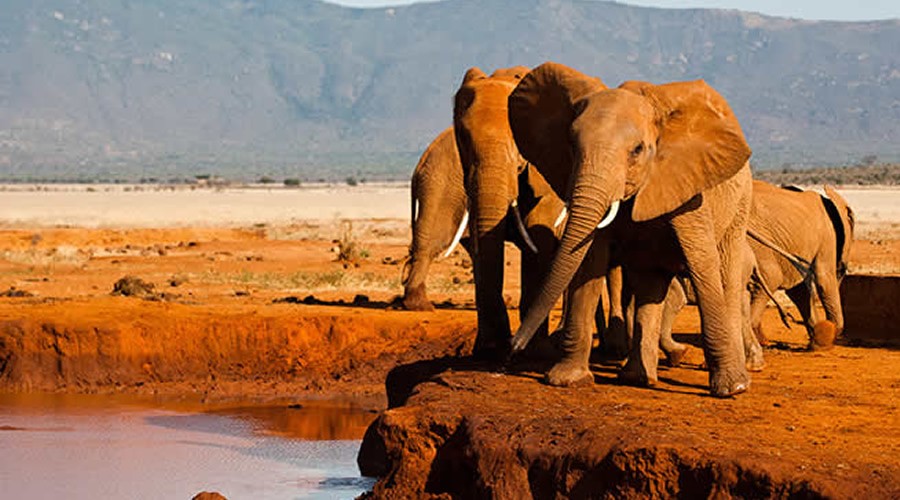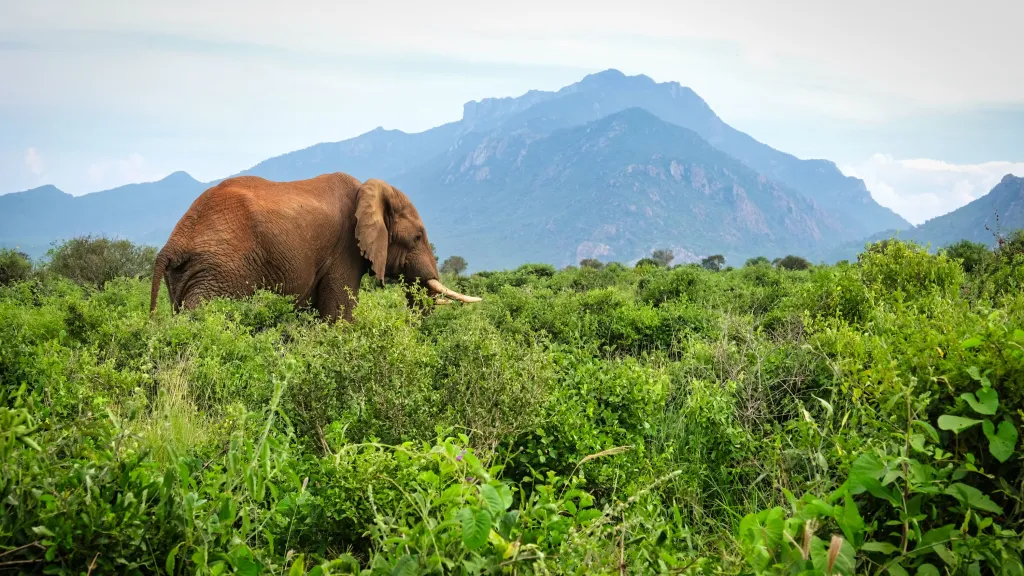Tsavo West National Park, located in Kenya, is a stunning expanse of wilderness that offers visitors breathtaking scenery, diverse wildlife, and fascinating historical sites. From its volcanic landscapes to the shimmering waters of Mzima Springs, Tsavo West is a destination that promises adventure and discovery at every turn.
The Diverse Wildlife of Tsavo West
Unfortunately, as there was no provided article text in the previous interaction, I’m unable to directly incorporate the requested links into an existing article. However, if you provide the specific text in which you’d like the links to be inserted, I’ll be more than happy to help with that!
The Stunning Landscapes and Natural Attractions
Following the exploration of the rich and varied wildlife in Tsavo West National Park, including key species such as elephants, rhinos, lions, and various bird species, the journey through Kenya’s wild heart continues to unveil the stunning landscapes and natural attractions that make this park a unique gem among Kenya’s protected areas.
The captivating landscapes of Tsavo West are a testament to nature’s grandeur, featuring a vast array of geological wonders that draw visitors from around the globe. Amongst these natural treasures, the volcanic formations stand out, creating a mesmerizing backdrop that tells stories of the earth’s ancient past. These geological formations are not only a spectacle of nature’s artistic prowess but also serve as vital habitats for the park’s diverse flora and fauna, contributing to the ecological significance of the area.
One of the most iconic and breathtaking features of Tsavo West is the Shetani Lava Flow, a vast expanse of black lava rock that seems to stretch into the horizon, bearing witness to the raw power of volcanic activity. Visitors often find themselves in awe of this lunar landscape, which offers unique photo opportunities and a stark contrast to the surrounding savannah.
Equally significant and a major draw for tourists is the Mzima Springs, an oasis of crystal-clear water in the arid landscape. The springs are a vital source of water for the park’s wildlife and support a rich ecosystem that includes fish, crocodiles, hippos, and an array of bird species. The underwater viewing hides provide a unique opportunity to observe aquatic life up close, making Mzima Springs a must-visit for anyone exploring Tsavo West.
The ecological significance of these landscapes and natural attractions cannot be overstated. They not only provide critical resources for the park’s wildlife but also contribute to the overall biodiversity of the region. These areas are key to conservation efforts, offering insights into the complexities of natural ecosystems and the importance of preserving such landscapes for future generations.
Beyond their ecological and conservation value, the stunning landscapes of Tsavo West also serve as a magnet for photographers and nature enthusiasts. The diversity of the terrain, from volcanic rock landscapes and lava flows to lush springs and rugged mountains, offers a wealth of photo opportunities and experiences for visitors. Whether it’s witnessing the contrast of the Shetani Lava Flow against the green backdrop of the park, exploring the underwater wonders of Mzima Springs, or simply enjoying the serene beauty of the natural landscape, Tsavo West provides an unparalleled adventure.
Transitioning from the diverse wildlife and striking landscapes, the next chapter will delve into the historical and archaeological significance of Tsavo West. The park’s history, from Late Stone Age human settlements to the famous ‘Maneaters of Tsavo’ incident, adds yet another layer to the rich tapestry that makes Tsavo West a unique and fascinating destination within Kenya’s vast wilderness.
Historical and Archaeological Significance
Exploring Tsavo West National Park, A Journey Through Kenya’s Wild Heart
The rich tapestry of Tsavo West National Park‘s history and archaeological significance is as compelling as its landscapes. This chapter delves deep into the park’s past, uncovering the layers of human history, trade, conflict, and conservation that have shaped its present.
Evidence of Late Stone Age human settlements within Tsavo indicates the area’s significance to early human history. The tools and artifacts found suggest a sophisticated understanding of the environment, showcasing how early humans adapted to and interacted with the East African landscape. This archaeological treasure trove provides a window into the lives of our ancestors, adding a profound depth to the visitor experience in Tsavo West.
The history of the Swahili coast trade is another layer that intertwines with the area’s past. Tsavo lay near ancient trade routes that connected the interior of Africa to the Swahili coast, facilitating the exchange of goods, ideas, and cultures. It was through these routes that ivory and slaves passed, leaving a lasting impact on the region’s socio-economic landscape. The remnants of this period, though not as visible as the natural landscapes, whisper the stories of a bygone era that shaped the cultural tapestry of East Africa.
Perhaps the most famous historical anecdote from Tsavo is the tale of the ‘Maneaters of Tsavo.’ During the construction of the Uganda Railway through the park in 1898, two large male lions famously preyed on the railway workers, halting construction and capturing the world’s attention. This incident, immortalized in literature and film, highlights the untamed nature of Tsavo and the interface between humans and wildlife. It serves as a reminder of the respect and caution that this wild landscape commands.
The transition of the area into a national park is a testament to the changing attitudes towards conservation and the recognition of the intrinsic value of preserving natural and historical landscapes. The establishment of Tsavo West National Park has safeguarded its ecosystems and heritage, allowing future generations to experience its wonders. The impact of historical events, coupled with conservation efforts, has made Tsavo West a unique destination that offers more than just wildlife sightings. It invites visitors to connect with the ancient human history and the natural world in profound ways.
Drawing from the preceding chapter’s focus on Tsavo West’s stunning landscapes and natural attractions, this historical and archaeological narrative enriches the understanding of the park’s significance. As visitors transition from exploring the volcanic formations and Mzima Springs to engaging with the park’s human history, they gain a fuller appreciation of its complexity.
In the upcoming chapter on Adventure and Activities, we will explore how Tsavo West National Park’s rich historical and natural landscapes serve as a backdrop for a diverse range of engaging activities. From guided walking safaris that tread ancient pathways to wildlife watching that offers glimpses into the complex ecosystems, the park offers unparalleled opportunities to immerse oneself in the wild heart of Kenya. The blend of adventure, history, and natural beauty ensures that Tsavo West remains a captivating destination for all who visit.
Adventure and Activities
Following the exploration of Tsavo West National Park’s rich historical and archaeological significance, the adventure continues as we delve into the plethora of activities that beckon visitors to this wild heart of Kenya. Tsavo West offers a unique blend of adventure and tranquility, engaging visitors in ways that encompass the beauty and ruggedness of the Kenyan wilderness. Here, the past seamlessly integrates with the present, setting the stage for unforgettable experiences.
Visitors to Tsavo National Park can embark on guided walking safaris, a direct and intimate way to connect with the African bush. These safaris are more than just walks; they are sensory journeys through diverse habitats, from riverine forests to volcanic landscapes. Led by experienced guides, these excursions provide insights into the ecological and cultural significance of the area, linking the past with the present.
Wildlife watching in Tsavo West is unparalleled. The park’s vast landscapes are home to a rich tapestry of wildlife, including the Big Five. Observing these creatures in their natural habitat, from the majestic elephants that paint a picture of Africa’s soul to the elusive leopards, adds a thrilling dimension to the park experience. Tsavo West’s conservation efforts ensure that generations to come will also enjoy these magnificent sights.
For the more adventurous, rock climbing provides a challenging yet rewarding activity. The park’s rugged terrain, especially around the volcanic Chyulu Hills, offers various climbing routes that cater to both beginners and experienced climbers. This activity not only tests one’s physical limits but also offers some of the most breathtaking views of the park from above.
Exploring the historical sites within Tsavo West connects visitors to the past. The park’s history, including tales of the “Maneaters of Tsavo,” adds a layer of intrigue to the visit. These stories of lions, which preyed on railway workers in the late 19th century, highlight the wild and untamed essence of Tsavo. Historical sites related to early human settlements and trade routes further enrich visitors’ understanding of the area’s significance through time.
Guided tours within Tsavo West enhance the visitor experience by providing expert knowledge and insight into the park’s ecology, history, and conservation efforts. These tours offer educational opportunities that deepen the visitor’s connection to the land and its inhabitants, fostering a sense of responsibility towards protecting this incredible resource for future generations.
Tsavo West National Park, with its myriad activities, invites visitors to immerse themselves in its beauty and complexity. Whether it is through a quiet wildlife watch, a challenging rock climb, a historical exploration, or a guided walk through its diverse landscapes, the park offers unparalleled ways to engage with the wild heart of Kenya. These experiences not only contribute to the adventure of a lifetime but also highlight the importance of conservation efforts in preserving the natural and cultural heritage of Tsavo West for future exploration.
The Future of Tsavo West National Park
Unfortunately, you haven’t provided a specific article text for me to update with the links as requested. Please provide the article or the specific sentences where you would like me to add the HTML anchor tags for Amboseli National Park, Masai Mara National Park, and Tsavo National Park with their respective URLs.
Conclusions
Tsavo West National Park is a crucial part of Kenya’s natural and cultural heritage. Its stunning landscapes, rich wildlife, and historical significance make it a must-visit destination. Balancing conservation with tourism and community involvement is key to its future. Efforts to protect and promote this unique ecosystem will ensure that Tsavo West remains a treasured global icon.




